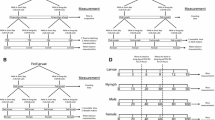Abstract
Groups of Rhipicephalus appendiculatus adults were prepared at three levels of hydration (100, 85 and 65%) and placed in small field enclosures. Some of the ticks were broadcast over the vegetation, while others were confined in nylon gauze bags and placed at soil level. Weight changes in the bagged ticks were monitored for 3 consecutive days by twice-daily weighing. Observations were made in the hot dry season, rainy season and the cool dry season. During the hot dry season there was a progressive loss in weight over the observation period, as during the night the ticks could not fully replace the water lost by day. In the rainy season there was an initial rapid uptake of water at night by the dehydrated groups and any weight losses during the day were easily replaced at night. In the cool dry season water losses were slight, and though ticks regained water at night, neither of the dehydrated groups became 100% hydrated during the period of observation.
Similar content being viewed by others
References
Browning T. O. (1976) The aggregation of questing ticks, Rhipicephalus pulchellus, on grass stems, with observations on R. appendiculatus. Physiol. Ent. 1, 107–114.
Lees A. D. (1946) The water balance in Ixodes ricinus L. and certain other species of ticks. Parasitology 37, 1–20.
Lees A. D. (1948) The sensory physiology of the sheep tick (Ixodes ricinus L). J. exp. Biol. 25, 145–207.
Macleod J. (1935) Ixodes ricinus in relation to its physical environment. II. The factors governing survival and activity. Parasitology 27, 123–144.
Punyua D. K., Newson R. M. and Mutinga M. J. (1985) Diurnal and seasonal activity of unfed adults of Rhipicephalus appendiculatus (Acarina: Ixodidae) in relation to some intrinsic and extrinsic factors—I. Factors regulating activity. Insect Sci. Applic. 6, 63–70.
Punyua D. K., Newson R. M. and Mutinga M. J. (1984) Diurnal and seasonal activity of unfed adults of Rhipicephalus appendiculatus (Acarina: Ixodidae) in relation to some intrinsic and extrinsic factors—II. Factors affecting vertical distribution of ticks in the habitat. Insect Sci. Applic. 5, 245–246.
Sauer J. R. and Hair J. A. (1971) Water balance in the Lone Star tick (Acarina: Ixodidae). The effects of relative humidity and temperature on weight changes and total water content. J. med. Ent. 8, 479–485.
Author information
Authors and Affiliations
Additional information
This paper is from a thesis submitted to the University of Nairobi in partial fulfilment of the requirements for the degree of Master of Science.
Rights and permissions
About this article
Cite this article
Punyua, D.K., Newson, R.M. & Mutinga, J.M. Diurnal and Seasonal Activity of Unfed Adults of Rhipicephalus appendiculatus (Acarina: Ixodidae) in Relation to Some Intrinsic and Extrinsic Factors—III. Int J Trop Insect Sci 6, 71–73 (1985). https://doi.org/10.1017/S1742758400002708
Received:
Revised:
Published:
Issue Date:
DOI: https://doi.org/10.1017/S1742758400002708




